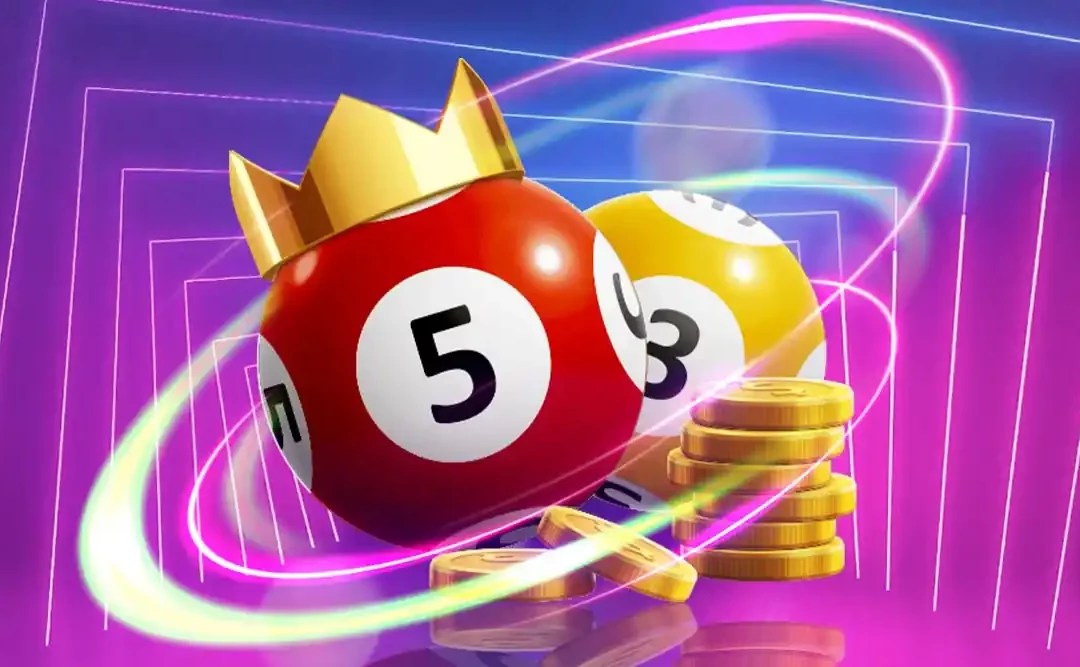Lottery and Keno are two popular games of chance that captivate millions worldwide. Both offer the allure of winning big, yet they differ significantly in structure and odds. Understanding these differences can enhance your gaming experience and potentially improve your chances of winning. Lottery games typically involve selecting a set of numbers from a larger pool, with draws occurring less frequently. Keno, on the other hand, is more dynamic, offering players the chance to pick numbers from a smaller pool with draws happening more frequently. This distinction in game mechanics leads to varying odds and strategies. While both games are governed by chance, knowing the odds, probabilities, and potential payouts can help players make informed decisions. Moreover, understanding the impact of state regulations and the house edge can further refine your approach to these games. This post delves into these aspects, providing insights into the world of Lottery and Keno.
How Do Lottery Odds Compare to Keno Odds?
Lottery odds are generally less favorable compared to Keno. In a typical lottery, players choose numbers from a large pool, often ranging from 1 to 49 or even higher. The odds of hitting the jackpot can be astronomical, often in the millions to one. This is because the number of possible combinations is vast. For example, in a 6/49 lottery, the odds of selecting the correct six numbers are 1 in 13,983,816.
Keno, however, offers better odds due to its structure. Players select numbers from a smaller pool, usually 1 to 80. The number of spots a player chooses affects the odds. For instance, picking 10 numbers out of 80 gives different odds than selecting 5. The odds of hitting all 10 numbers are around 1 in 8.9 million, which is still high but more favorable than most lotteries.
The frequency of draws also impacts the odds. Keno games often have multiple draws daily, providing more opportunities to play and win. This contrasts with lotteries, which may have weekly or bi-weekly draws. Understanding these odds is crucial for players aiming to maximize their chances of winning.
Understanding the Probability of Winning in Lottery and Keno
Probability plays a crucial role in both Lottery and Keno. In lotteries, the probability of winning is determined by the number of possible combinations. For example, in a 6/49 lottery, the probability of winning the jackpot is 1 in 13,983,816. This means that for every 13,983,816 tickets sold, one is expected to win the jackpot.
Keno, on the other hand, offers varying probabilities based on the number of spots chosen. If a player selects 10 numbers, the probability of hitting all 10 is 1 in 8.9 million. However, the probability of hitting at least a few numbers is much higher. This makes Keno appealing to players who prefer frequent, smaller wins.
Understanding these probabilities helps players set realistic expectations. While the odds of winning a lottery jackpot are slim, smaller prizes are more attainable. In Keno, players can adjust their strategy by choosing different numbers of spots, influencing their probability of winning. This flexibility allows for a more tailored gaming experience.
Strategies to Improve Your Chances in Keno
While Keno is a game of chance, certain strategies can enhance your experience. First, consider the number of spots you choose. Selecting fewer spots increases the probability of hitting some numbers, though the payout may be smaller. Conversely, choosing more spots offers higher payouts but with lower odds.
Another strategy is to play consistently. Frequent play increases your chances of winning over time. However, it’s essential to set a budget and stick to it. This prevents overspending and ensures a sustainable gaming experience.
Some players also track numbers that appear frequently, believing in patterns. While Keno draws are random, this strategy can add an element of fun. Additionally, taking advantage of bonuses or promotions offered by casinos can boost your bankroll.
Ultimately, the key to Keno is to enjoy the game while playing responsibly. By understanding the odds and employing these strategies, players can enhance their chances and enjoy a more rewarding experience.
Lottery Jackpot vs. Keno Payouts: Which Is More Lucrative?
Lottery jackpots are often more lucrative than Keno payouts. This is due to the large number of participants and the accumulation of prize money over time. Lottery jackpots can reach millions, sometimes even billions, making them highly attractive. However, the odds of winning such jackpots are extremely low, often in the millions to one.
Keno, on the other hand, offers smaller payouts but with better odds. The payouts in Keno depend on the number of spots chosen and the amount wagered. While hitting all chosen numbers can result in a significant payout, it is generally less than a lottery jackpot. However, the frequency of Keno draws means players have more opportunities to win smaller amounts.
For players seeking life-changing sums, lotteries may be more appealing. However, for those who prefer frequent wins and a more engaging experience, Keno offers a viable alternative. Understanding these differences helps players choose the game that aligns with their goals and preferences.
Exploring the Variations of Lottery and Keno Games
Lottery and Keno games come in various forms, each offering unique experiences. Traditional lotteries involve selecting numbers from a set pool, with draws occurring weekly or bi-weekly. However, many regions offer variations such as scratch-off tickets or instant win games, providing immediate results.
Keno also boasts several variations. Traditional Keno involves selecting numbers from 1 to 80, but some versions offer different pools or additional features. For example, Power Keno multiplies winnings if the last number drawn is a match. Other variations include Super Keno and Progressive Keno, each with unique rules and payouts.
Online platforms further expand these variations, offering themed games or special bonuses. These variations cater to different player preferences, from those seeking quick results to those enjoying strategic play. Understanding these variations allows players to choose games that best suit their interests and enhance their gaming experience.
How Does Game Frequency Affect Your Odds in Keno?
Game frequency significantly impacts your odds in Keno. Unlike lotteries, which have limited draws, Keno offers multiple draws daily. This frequency provides players with more opportunities to play and win. Each draw is independent, meaning previous results do not affect future outcomes.
Frequent draws allow players to experiment with different strategies, such as changing the number of spots or adjusting wagers. This flexibility can enhance the gaming experience and potentially improve odds over time. However, it’s crucial to play responsibly and avoid chasing losses.
The increased frequency also means players can enjoy the game without long waiting periods. This immediacy appeals to those seeking quick results and frequent engagement. Understanding how game frequency affects odds helps players make informed decisions and enjoy a more dynamic gaming experience.
Analyzing the Cost-Effectiveness of Playing Lottery vs. Keno
Cost-effectiveness is a crucial consideration for players. Lotteries typically require purchasing tickets for each draw, with costs varying based on the game. The potential for large jackpots can justify the expense, but the low odds of winning mean many players may not see a return on investment.
Keno, with its frequent draws, allows for more flexible spending. Players can choose their wager amount, making it easier to manage costs. The potential for smaller, more frequent wins can offer a more consistent return, though the payouts are generally less than lottery jackpots.
For budget-conscious players, Keno may offer a more cost-effective option. The ability to adjust wagers and play frequently can provide entertainment without significant financial risk. Understanding the cost-effectiveness of each game helps players make informed choices and enjoy a sustainable gaming experience.
What Are the Common Misconceptions About Lottery and Keno Odds?
Misconceptions about Lottery and Keno odds are common. One prevalent myth is that certain numbers are “due” to be drawn. In reality, each draw is independent, and past results do not influence future outcomes.
Another misconception is that buying more tickets or playing more games guarantees a win. While it increases the chances, it does not ensure success. The odds remain the same for each ticket or game played.
Some players believe in “lucky” numbers or patterns. While these can add enjoyment, they do not affect the odds. Understanding these misconceptions helps players approach the games with a realistic mindset.
By recognizing these myths, players can focus on enjoying the games responsibly. Knowledge of the true odds and probabilities allows for a more informed and enjoyable gaming experience.
Comparing the House Edge in Lottery and Keno
The house edge is a critical factor in gambling. It represents the casino’s advantage over players. In lotteries, the house edge can be substantial, often exceeding 50%. This is due to the low probability of winning the jackpot and the structure of prize payouts.
Keno typically has a lower house edge, ranging from 25% to 40%. This varies based on the number of spots chosen and the specific game rules. While still significant, the lower house edge in Keno offers better odds for players compared to lotteries.
Understanding the house edge helps players make informed decisions. While both games are designed to favor the house, Keno offers a more favorable balance between risk and reward. This knowledge allows players to choose games that align with their preferences and risk tolerance.
How Do State Regulations Impact Lottery and Keno Odds?
State regulations play a significant role in shaping Lottery and Keno odds. Each state has its own rules governing these games, affecting everything from prize payouts to the frequency of draws.
In lotteries, state regulations determine the allocation of prize money. Some states allocate a higher percentage to jackpots, while others focus on smaller prizes. This affects the overall odds and potential payouts.
Keno regulations can influence the number of draws and the structure of payouts. States may impose limits on the number of spots or adjust the house edge to ensure fair play.
Understanding state regulations helps players navigate the gaming landscape. By knowing the rules and odds specific to their location, players can make informed decisions and enjoy a more tailored gaming experience.
Lottery and Keno offer unique gaming experiences. Each has its own odds, strategies, and potential payouts. Understanding these differences is key to making informed decisions. While lotteries offer the allure of massive jackpots, Keno provides more frequent opportunities to win. Both games are governed by chance, but knowledge of odds and strategies can enhance your experience. State regulations and house edge also play crucial roles. By understanding these factors, players can enjoy a more rewarding and responsible gaming experience. Whether you prefer the thrill of chasing a lottery jackpot or the dynamic nature of Keno, informed play is the best approach.


